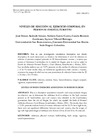Identificador persistente para citar o vincular este elemento:
https://accedacris.ulpgc.es/jspui/handle/10553/10024
| Campo DC | Valor | idioma |
|---|---|---|
| dc.contributor.author | Andrade Salazar, José Alonso | en_US |
| dc.contributor.author | García Castro, Stefanía | en_US |
| dc.contributor.author | Remicio Zambrano, Camila | en_US |
| dc.contributor.author | Villamil Buitrago, Stywear | en_US |
| dc.date.accessioned | 2013-04-26T05:00:22Z | |
| dc.date.accessioned | 2018-03-15T14:24:27Z | - |
| dc.date.available | 2013-04-26T05:00:22Z | |
| dc.date.available | 2018-03-15T14:24:27Z | - |
| dc.date.issued | 2007 | en_US |
| dc.identifier.issn | 1886-8576 | en_US |
| dc.identifier.uri | https://accedacris.ulpgc.es/handle/10553/10024 | - |
| dc.description.abstract | Esta es una investigación cuantitativa descriptiva con diseño descriptivo de corte transversal, su objetivo fue determinar el nivel de adicción en relación al ejercicio corporal presente en 30 fisicoculturistas varones y mujeres que asisten al Gimnasio Comfatolima de la ciudad de Ibagué, para lo cual se aplicó la Escala de Adicción General Ramón y Cajal (Ramos, Sansebastián y Madoz, 2001). Los resultados indican que un 73.3% presenta niveles medios de adicción al ejercicio y el 26.7% tiene niveles altos, sin diferencias significativas entre varones y mujeres, asimismo los rangos de edad con mayores porcentajes de adicción fueron entre los 20 a 32 años y 33 a 45 años. | en_US |
| dc.description.abstract | This is a descriptive quantitative research with cross-sectional design, its objective was to determine the addiction level in relation to the body exercise present in 30 bodybuilders men and women who attended to the Comfatolima gymnasium from the city of Ibague, for which was applied the Scale of General Addiction Ramon y Cajal (Ramos Sansebastián y Madoz, 2001). The results show that a 73.3% presents medium levels of exercise addiction and the 26.7% have high levels, there were not significant differences between men and women, also the ranges of age with high percentages of addition were between 20 to 32 and 33 to 45 years old. | en_US |
| dc.format | application/pdf | es |
| dc.language | spa | en_US |
| dc.relation.ispartof | Revista Iberoamericana de Psicologia del Ejercicio y el Deporte | en_US |
| dc.source | Revista Iberoamericana de Psicología del Ejercicio y el Deporte. Sevilla : Wanceulen, 2006- .-- ISSN 1886-8576. año 2012, vol. 7, n. 2 | en_US |
| dc.subject | 61 Psicología | en_US |
| dc.subject.other | Adicción | en_US |
| dc.subject.other | Ejercicio físico | en_US |
| dc.subject.other | Fisicoculturismo | en_US |
| dc.subject.other | Imagen corporal | en_US |
| dc.subject.other | Vigorexia | en_US |
| dc.subject.other | Representación social | en_US |
| dc.title | Niveles de adicción al ejercicio corporal en personas fisicoculturistas | en_US |
| dc.type | info:eu-repo/semantics/article | en_US |
| dc.type | Article | en_US |
| dc.compliance.driver | 1 | es |
| dc.identifier.absysnet | 537108 | - |
| dc.investigacion | Artes y Humanidades | en_US |
| dc.rights.accessrights | info:eu-repo/semantics/openAccess | es |
| dc.type2 | Artículo | en_US |
| dc.identifier.ulpgc | Sí | es |
| dc.description.sellofecyt | Sello FECYT | |
| dc.description.esci | ESCI | |
| dc.description.erihplus | ERIH PLUS | |
| item.fulltext | Con texto completo | - |
| item.grantfulltext | open | - |
| Colección: | Rev. Iberoam. psicol. ejerc. deporte. 2012. v.7, n.2 Artículos | |
Visitas 10
196
actualizado el 07-dic-2024
Descargas
270
actualizado el 07-dic-2024
Google ScholarTM
Verifica
Comparte
Exporta metadatos
Los elementos en ULPGC accedaCRIS están protegidos por derechos de autor con todos los derechos reservados, a menos que se indique lo contrario.
